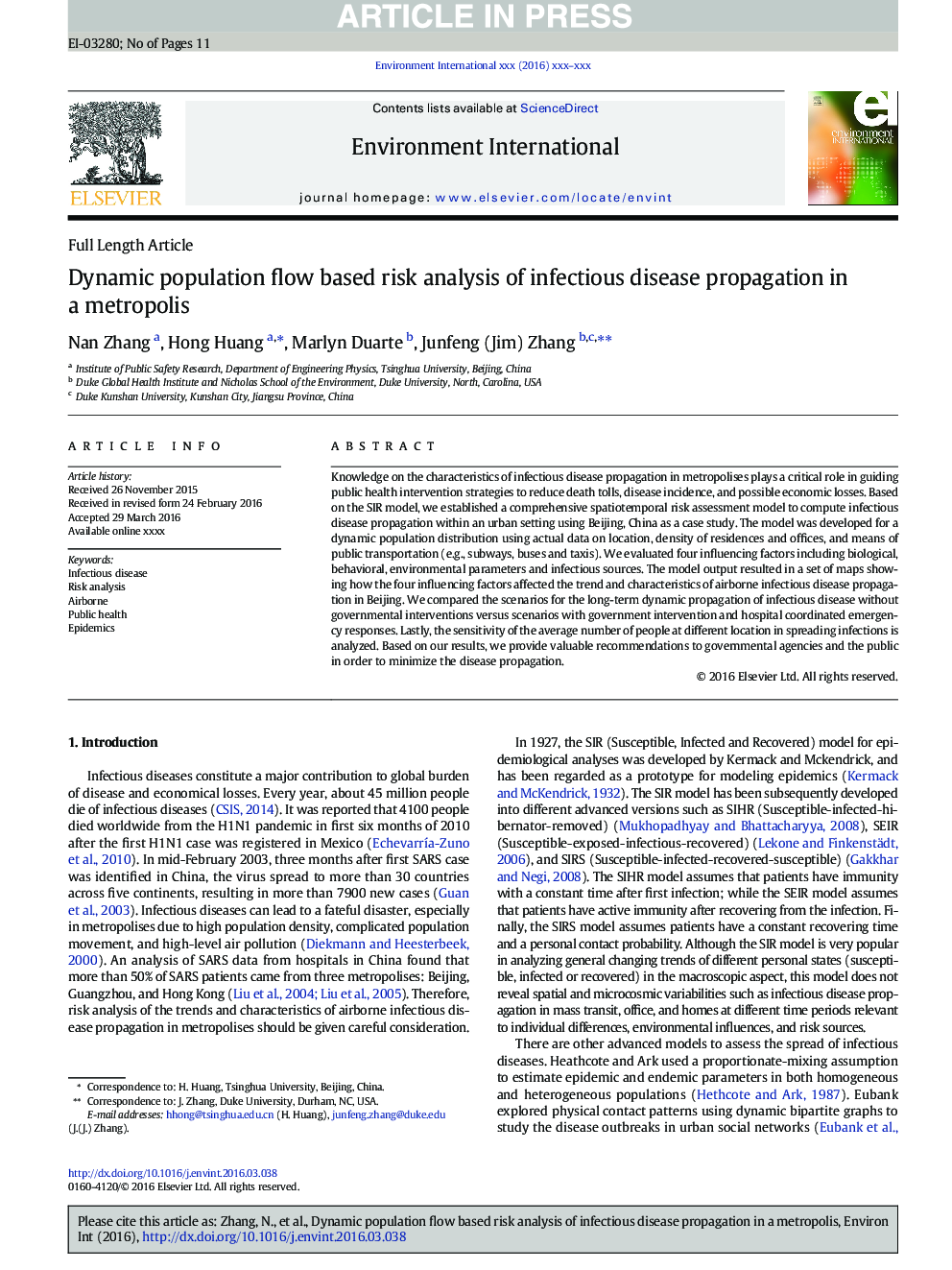| Article ID | Journal | Published Year | Pages | File Type |
|---|---|---|---|---|
| 6312811 | Environment International | 2016 | 11 Pages |
Abstract
Knowledge on the characteristics of infectious disease propagation in metropolises plays a critical role in guiding public health intervention strategies to reduce death tolls, disease incidence, and possible economic losses. Based on the SIR model, we established a comprehensive spatiotemporal risk assessment model to compute infectious disease propagation within an urban setting using Beijing, China as a case study. The model was developed for a dynamic population distribution using actual data on location, density of residences and offices, and means of public transportation (e.g., subways, buses and taxis). We evaluated four influencing factors including biological, behavioral, environmental parameters and infectious sources. The model output resulted in a set of maps showing how the four influencing factors affected the trend and characteristics of airborne infectious disease propagation in Beijing. We compared the scenarios for the long-term dynamic propagation of infectious disease without governmental interventions versus scenarios with government intervention and hospital coordinated emergency responses. Lastly, the sensitivity of the average number of people at different location in spreading infections is analyzed. Based on our results, we provide valuable recommendations to governmental agencies and the public in order to minimize the disease propagation.
Related Topics
Life Sciences
Environmental Science
Environmental Chemistry
Authors
Nan Zhang, Hong Huang, Marlyn Duarte, Junfeng (Jim) Zhang,
